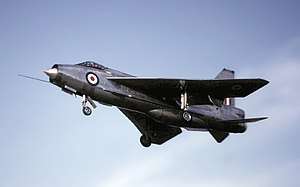British Aircraft Corporation
The British Aircraft Corporation (BAC) was a British aircraft manufacturer formed from the government-pressured merger of English Electric Aviation Ltd., Vickers-Armstrongs (Aircraft), the Bristol Aeroplane Company and Hunting Aircraft in 1960. Bristol, English Electric and Vickers became "parents" of BAC with shareholdings of 20%, 40% and 40% respectively. BAC in turn acquired the share capital of their aviation interests and 70% of Hunting several months later.[1] Its head office was on the top floors of the 100 Pall Mall building in the City of Westminster, London.[2][3]
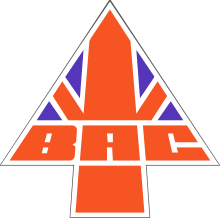 British Aircraft Corporation logo. The logo was adopted by British Aerospace, the successor to BAC. | |
| Industry | aviation industry |
|---|---|
| Fate | Merged with Hawker Siddeley and Scottish Aviation |
| Predecessor | Bristol Aeroplane Company, Vickers-Armstrongs, English Electric |
| Successor | British Aerospace |
| Founded | 1960 |
| Defunct | 29 April 1977 |
| Headquarters | , |
History
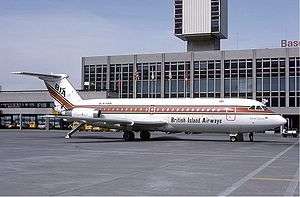
BAC was formed following a warning from government that it expected consolidation in the aircraft, guided weapons and engine industries. The government also promised incentives for such a move, including the supersonic BAC TSR-2 strike aircraft contract, the maintenance of government research and development spending and the guarantee of aid in launching "promising new types of civil aircraft".[4]
The new corporation was jointly owned by Vickers, English Electric and Bristol. Internally it had two divisions – the Aircraft Division under Sir George Edwards and the Guided Weapons Division under Viscount Caldecote. The aircraft operations of the three parents were now subsidiaries of BAC; "Bristol Aircraft Ltd", "English Electric Aviation Ltd" (with Viscount Caldecote as general manager) and "Vickers-Armstrongs (Aircraft) Ltd" (under Sir George Edwards). BAC also had a controlling interest in Hunting Aircraft. The parents still had significant aviation interests outside BAC. English Electric had Napier & Son aero-engines, Bristol had 50% of Bristol Aerojet and Bristol Siddeley engines and smaller investments in Westland and Short Brothers & Harland.[5]
When BAC was formed, the Bristol Aeroplane Company (Car Division) was not included in the consolidation, but carved off by Sir George White whose family had founded the British and Colonial Aeroplane Company in 1910 (later the Bristol Aeroplane Company). It remains operational today as Bristol Cars.[6]
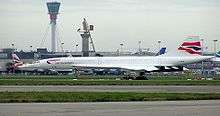
Most of the BAC designs were taken over from the individual companies that formed it. BAC did not apply its new identity retrospectively, hence the VC10 remained the Vickers VC10. Instead the company applied its name to marketing initiatives, the VC10 advertising carried the name "Vickers-Armstrongs (Aircraft) Limited, a member company of the British Aircraft Corporation". The first model to bear the BAC name was the BAC One-Eleven (BAC 1–11), a Hunting Aircraft study, in 1961. Bristol had eschewed the subsonic airliner market and was working on the Bristol 223 supersonic transport, which was eventually merged with similar efforts at Sud Aviation to create the Anglo-French Concorde venture. The first Concorde contracts were signed with Air France and BOAC in September 1972.
In 1963, BAC acquired the previously autonomous guided weapons divisions of English Electric and Bristol to form a new subsidiary, British Aircraft Corporation (Guided Weapons). The company enjoyed some success, including development of the Rapier, Sea Skua and Sea Wolf missiles. BAC eventually expanded this division to include electronics and space systems and, in 1966, started what was to become a particularly fruitful relationship with Hughes Aircraft. Hughes awarded major contracts to BAC, including sub-systems for Intelsat satellites.[7]
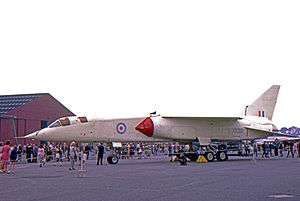
The cancellation of the TSR-2 in April 1965 was a major blow to the new company. After successfully flying the prototype aircraft, political pressure forced development to cease and the remaining airframes and most supporting equipment and documentation to be destroyed. Given the numerous government contract cancellations during the 1960s, the BAC 1–11, launched as a private venture, probably saved the company.[8]
In May 1966, BAC and Breguet formed SEPECAT, a joint company to manage the Jaguar aircraft programme. The first of eight prototypes flew on 8 September 1968, and service entry was achieved with the French Air Force in 1973, by which time Breguet had become part of Dassault Aviation.
Also in 1966, Rolls-Royce acquired Bristol Aeroplane for its Bristol Siddeley aero-engine business, but declared it had no interest in the BAC shareholding. Despite this, Rolls-Royce still had not disposed of its BAC shareholding by 1971 when Rolls-Royce was declared bankrupt. The 20% share was eventually acquired from receivership by Vickers and GEC, who had acquired English Electric in 1968.
In 1967, the British, French and German governments agreed to start development of the 300-seat Airbus A300. BAC argued against the proposal in favour of their BAC Three-Eleven project, intended as a large wide-bodied airliner like the Airbus A300, Douglas DC-10 and Lockheed TriStar. Like the One-Eleven, it would have carried two Rolls-Royce turbofan engines, mounted near the tail. The British national airline BEA wanted to order the type, but government intervention prevented it in favour of the Airbus development. BAC was refused development funds and Hawker Siddeley was awarded the contract to build the Airbus wings.
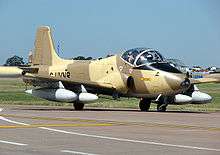
Saudi Arabia
In the early 1960s, the Saudi Arabian government announced its intention to launch a massive defence acquisition programme involving the replacement of the country's fighter aircraft and the establishment of an advanced air defence and communications network. American companies seemed guaranteed to win the contract, but, due to the efforts of BAC, the Royal Saudi Air Force (RSAF) looked towards British aircraft and equipment to fulfill their needs.
By 1964, BAC conducted demonstration flights of their Lightning in Riyadh and, in 1965, Saudi Arabia signed a letter of intent to purchase Lightning and Strikemaster aircraft as well as Thunderbird surface-to-air missiles. The main contract was signed in 1966 for forty Lightnings and twenty-five (ultimately forty) Strikemasters. In 1973, the Saudi government signed an agreement with the British government which specified BAC as the contractor for all parts of the defence system (AEI was previously contracted to supply the radar equipment and Airwork Services provided servicing and training). Overall spending by the RSAF was over £1 billion GBP.[9]
BAC, with the Lightning/Strikemaster contract; British Aerospace, with the Al Yamamah contracts; and most recently BAE Systems, with the order for Typhoon multi-role fighters, have all benefited from massive arms contracts with Saudi Arabia.
Merger speculation
For most of its history, BAC was the subject of rumour and speculation that it was to merge with Hawker Siddeley Aviation (HSA). On 21 November 1966, Fred Mulley, the Minister of Aviation, announced in the House of Commons that:
...the government had come to the conclusion that the national interest would best be served by a merger of the airframe interests of BAC and Hawker Siddeley into a single company.[10]
The government envisaged acquiring BAC's capital and merging it with Hawker Siddeley. The ownership of BAC would thus give the government a minority stake in the new company. Although BAC's parent companies were prepared to sell their shares for a reasonable price, the government proposal, in their view, undervalued the group. By August 1967, the success of the BAC 1–11 and defence sales to Saudi Arabia made the prospect of the parent companies selling their shares less likely. In December 1967, Anthony Wedgwood Benn, the Minister of Technology, while reiterating his desire to see a merged BAC and HSA, admitted it would not be possible.[11]
Tornado
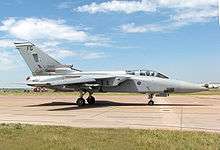
In June 1967, the Anglo French Variable Geometry (AFVG), a proposed swing-wing strike aircraft, was cancelled due to the withdrawal of French participation. Britain then turned to a national project, the UK Variable Geometry (UKVG), for which BAC Warton was given a design contract by the Ministry of Technology. These studies eventually became known as the BAC Advanced Combat Aircraft programme. In 1968, Britain was invited to join Canada and the F-104 Consortium (a grouping of Germany, Italy, Belgium and the Netherlands), all of whom wished to replace their current aircraft with a common design, subsequently described as the Multi Role Combat Aircraft (MRCA).
On 26 March 1969, Panavia Aircraft GmbH was formed by BAC, MBB, Fiat and Fokker. In May, a "project definition phase" was commenced, concluding in early 1970. Two aircraft designs resulted: the single-seat Panavia 100 and the twin-seat Panavia 200. The RAF favoured the 200, as did Germany after its initial enthusiasms for the 100.
In September 1971, the governments of Britain, Italy and Germany signed an Intention to Proceed (ITP) with the Panavia Tornado. On 30 October 1974, the first British prototype (the second to fly) took off from the BAC airfield at Warton. The three governments signed the contract for Batch 1 of the aircraft on 29 July 1976. BAC and subsequently British Aerospace (BAe) would deliver 228 Tornado GR1s and 152 Tornado F3s to the RAF.
Nationalisation
Like BAC, the Hawker Siddeley Group was expanded by merger, while engine design and manufacturing was concentrated at Rolls-Royce and the newly formed Bristol-Siddeley Engines. Helicopter development was given to Westland Helicopters.
On 29 April 1977, BAC, the Hawker Siddeley Group and Scottish Aviation were nationalised and merged under the provisions of Aircraft and Shipbuilding Industries Act 1977. This new group was established as a statutory corporation, British Aerospace (BAe).
Products
Products usually known under the BAC name include:
Aircraft
- AFVG proposed and cancelled multi-role military jet
- BAC One-Eleven jetliner
- BAC Two-Eleven and Three-Eleven – proposed and cancelled jetliners
- BAC 221 – jet fighter concept modified Fairey Delta 2 for Concorde development work
- BAC Jet Provost trainer aircraft
- BAC Strikemaster military attack jet
- BAC / Aérospatiale Concorde – supersonic jetliner
- BAC TSR-2 Tactical strike/reconnaissance jet fighter
- BAC / Bristol 188 – experimental jet
- BAC / Bristol Britannia – Turboprop airliner
- BAC / English Electric Canberra – jet bomber
- BAC / English Electric Lightning – supersonic jet fighter
- BAC / Hunting H.126 – experimental aircraft
- BAC / Hunting Jet Provost – military jet trainer
- BAC / Vickers Supermarine Scimitar – naval jet strike fighter
- BAC / Vickers VC10 – jet liner
- BAC / Vickers Viscount – Turboprop airliner
- BAC / Vickers Vanguard – Turboprop airliner
- Panavia Tornado/Panavia Tornado ADV – multi-role attack jet fighter; multinational project
- SEPECAT Jaguar – Ground attack jet fighter; Anglo-French project
Missiles
- BAC Rapier missile surface-to-air missile
- BAC Sea Skua helicopter-launched naval air-to-surface missile
- BAC Sea Wolf missile naval/shipborne-guided surface-to-air missile
- BAC Swingfire anti-tank missile
- BAC / Vickers Vigilant wire-guided anti-tank missile
In addition BAC continued with the Bristol Bloodhound and English Electric Thunderbird surface-to-air missiles.
Spacecraft
BAC was involved in uncrewed spacecraft, principally satellites
- Ariel 4 – research satellite
- Intelsat – communications satellite; BAC provided several sub-systems to Hughes (the prime contractor) and assembled Intelsat 4 as well as providing the structure solar panels and battery pack[12]
- Prospero X-3 – experimental satellite
- Multi-Unit Space Transport And Recovery Device (MUSTARD) was a proposed launch system consisting of three reusable lifting body craft operating together.
Key people
Aircraft designers and engineers
Test pilots
References
- Charles Gardner, British Aircraft Corporation. A history by Charles Gardner, B.T. Batsford Ltd, 1981 (ISBN 0-7134-3815-0), p. 38.
- Gardner, Charles (1981). British Aircraft Corporation: a history. Batsford: Batsford. p. 40.
The London headquarters chosen for bac were at 100 Pall Mall – on the top floors of a new concrete box which had sprung up on the site of the old, historic (and bombed) Carlton Club. It was the view of bac that small London headquarters[...]
- "Maps Archived 5 September 2011 at the Wayback Machine." City of Westminster. Retrieved on 28 August 2009.
- Gardner 1981, p. 37.
- "An Industry Regrouped" Flight 2 September 1960 p368
- "Bristol Owners Club : History of the Bristol Marque". Archived from the original on 7 October 2006.
- Gardner 1981, p. 189.
- Gardner 1981, p. 67.
- Gardner 1981, pp. 244–249.
- Hansard HC Deb 21 November 1966 vol 736 c967
- Gardner 1981, pp. 156–160.
- "Application Satellites" Flight 16 July 1970 p. 1308
